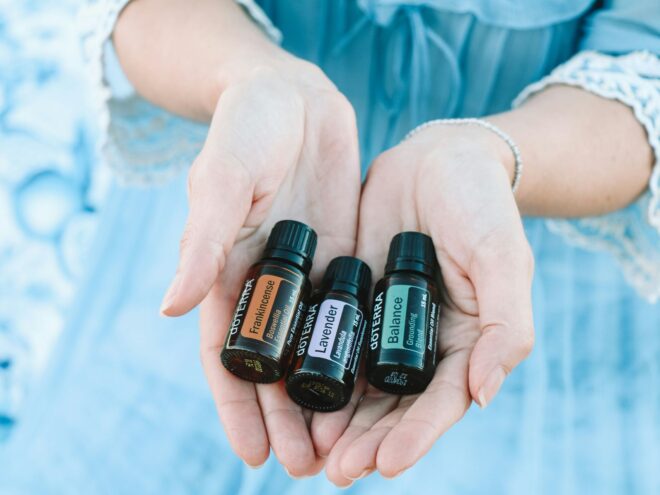Home • 11/13/2023
A Guide to Orchid Care: Tips For Growing Beautiful Orchids

Revivalist is a reader-supported endeavor and our posts may contain affiliate links. When you buy through links on our site, we may earn an affiliate commission.
Orchids are considered one of the most elegant and exotic houseplants. Their vibrant colors and intricate blooms have made them a favorite among plant enthusiasts, however proper orchid care is crucial for these flowers to thrive. While they may seem delicate and challenging to care for, anyone can successfully grow and nurture these beautiful flowers with the proper knowledge and a little patience.
Choosing the Right Orchid
Before determining how to care for your orchid, selecting a suitable orchid species for your environment and skill level is essential. Some of the most common orchids perfect for beginners include moth orchids (Phalaenopsis), Dendrobium and Cymbidium. These orchids are known for their relatively low maintenance requirements compared to other varieties.
Orchids are a beautiful way to brighten up your home and bring a little bit of nature inside. While they make great centerpieces or decorations, they often require tedious orchid care if you want them to thrive.
Light Requirements
Orchids are particular about their light requirements. They need a balance of light, but too much direct sunlight can scorch their leaves, while too little light can hinder their growth and blooming. Here’s a guideline for providing the right amount of light:
- Indirect light: Most orchids thrive in bright, indirect light. Place them near a window with sheer curtains or use a sheer curtain to filter sunlight. Avoid exposing them to the harsh midday sun.
- South-facing windows: Orchids generally do well near south-facing windows that receive filtered sunlight. East-facing windows are also suitable for morning sunlight.
- Artificial lighting: If natural sunlight is insufficient, consider using fluorescent or LED grow lights designed for orchids. These can provide the necessary light spectrum for healthy growth and flowering.
Watering
Orchids have unique watering needs that often differ from typical houseplants. Overwatering is one of the most common mistakes made when caring for orchids. You can set water reminders for yourself every week to check on your plants. Here’s how to water them properly:
- Allow soil to dry: Water your orchid when the top inch of the potting medium is dry to the touch. Stick your finger into the medium to check the moisture level.
- Use room temperature water: Avoid using hot or cold water – orchids prefer water at room temperature. Water thoroughly, allowing excess water to drain from the pot.
- Pots with drainage hotels: Always use pots with drainage holes to prevent waterlogged roots, which can lead to root rot.
- Watering frequency: The frequency of watering depends on factors like temperature and humidity. Generally, orchids may need watering every one to two weeks, but this can vary.
Humidity and Temperature
Orchids are sensitive to changes in temperature and humidity. Here are some tips to create the ideal environment:
- Humidity: Orchids thrive in higher humidity levels (around 40%–70%). You can increase humidity by using a humidity tray, a room humidifier or misting the orchid regularly.
- Temperature: Most orchids prefer temperatures between 60°F–80°F (15°C–27°C) during the day, with a slight drop at night. It’s essential to avoid sudden temperature fluctuations.
Fertilizing
Fertilizing orchids is crucial to give them the nutrients they need to grow and bloom. Use a balanced orchid fertilizer (such as 20-20-20) and follow these guidelines:
- Dilute the fertilizer to a quarter of the recommended strength.
- Fertilize during the active growth season (usually spring to early fall) every two to four weeks.
- Reduce or stop fertilizing during the orchid’s dormant period in late fall and winter.
Potting Mix
The choice of potting mix for your orchids is crucial to their overall health and growth. Orchids require a well-draining mix that provides stability for their roots while allowing for proper aeration and moisture retention. A common and effective orchid potting mix typically includes a blend of materials such as bark, sphagnum moss perlite and charcoal. The bark provides stability, sphagnum moss helps retain moisture, perlite enhances drainage and charcoal aids in keeping the mix odor-free and preventing fungal growth.
The specific mix ratio can vary depending on the type of orchid you’re growing, so it’s vital to research the particular requirements of your orchid species or hybrid. Repotting your orchid into a fresh potting mix when it outgrows its current container or when the mixture begins to break down is a crucial step in orchid care to ensure your plant’s continued health and longevity.
Air Circulation
Orchids benefit from good air circulation around their leaves and roots. Ensure the room has some airflow to prevent stagnant, overly humid conditions that can lead to mold and rot. Some pests, like spider mites, thrive in still, humid conditions. Air circulation can help deter these pests from infesting your orchids.
Here are some tips to help improve the air circulation around your orchids:
- Place orchids on shelves or stands to allow airflow underneath the pots.
- Use oscillating fans set on low or place a ceiling fan on low speed in the room where your orchids are.
- Avoid overcrowding your orchids, as this can impede airflow between the plants.
Repotting
Orchids typically need repotting every one to two years or when you see signs of overcrowded roots. Use a well-draining orchid mix and a slightly larger pot than the previous one. It’s best to do repotting in the spring after flowering.
Pruning
Pruning and deadheading are essential maintenance tasks for orchid care. They help keep your orchid looking healthy and encourage new growth and flowering. Here’s how to do it:
- Deadheading flowers: Once an orchid’s flowers begin to wilt and fade, it’s time to deadhead them. Use clean, sharp scissors or pruning shears to snip the flower spike just above the node where a new flower may eventually emerge. Deadheading encourages the plant to put its energy into producing fresh blooms rather than seed production.
- Trimming yellow or dead leaves: Orchids naturally shed older leaves as they grow. If you notice yellowing or dead leaves, carefully remove them using sterilized scissors or shears. Trim them close to the base of the plant without damaging nearby healthy leaves.
- Root pruning: During repotting, you may need to trim and remove damaged or rotting roots. Use clean, sharp scissors or pruning shears for this task. Trim away any discolored or mushy roots, leaving only healthy ones. Applying cinnamon to the cut surfaces can help prevent infection.
- Stake and support pruning: If you use stakes or supports to keep your orchid upright, periodically check them. Adjust the stakes and ties to accommodate the new growth as the plant grows. Use soft, flexible ties to avoid damaging the orchid’s stems.
Watch Your Orchids Bloom
Orchid care can seem intimidating at first, but with the proper knowledge and attention to detail, growing beautiful orchids is a rewarding experience. By following these essential orchid care tips, you can enjoy the beauty of these exotic flowers in your home for years to come.
Subscribe to Our Weekly Newsletter
We would love to connect deeper with you!


